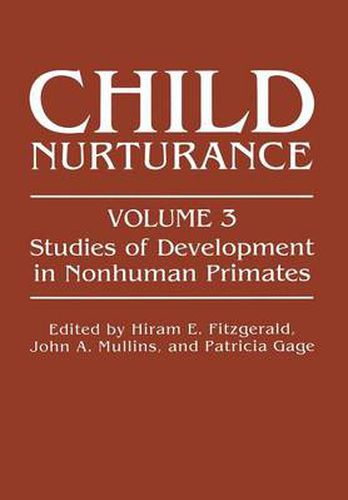Readings Newsletter
Become a Readings Member to make your shopping experience even easier.
Sign in or sign up for free!
You’re not far away from qualifying for FREE standard shipping within Australia
You’ve qualified for FREE standard shipping within Australia
The cart is loading…






This title is printed to order. This book may have been self-published. If so, we cannot guarantee the quality of the content. In the main most books will have gone through the editing process however some may not. We therefore suggest that you be aware of this before ordering this book. If in doubt check either the author or publisher’s details as we are unable to accept any returns unless they are faulty. Please contact us if you have any questions.
The underlying theme uniting the papers of this volume is the quest for a further understanding of human behavior. The similarities between the behaviors of other primates and humans have captivated us even before a science arose. But what is the justification for making such comparisons? Comparisons, like classifications, can be made on any basis whatever. The aim in making any scientific comparison is the same as doing a classification. That is, one attempts to make the comparison on a natural basis. Natural, in this case, means that the comparison reflects processes that occur in nature. The fundamental paradigm for making natural comparisons in biology is based on evolutionary theory. The evolutionary paradigm is inherently one of comparisons between and within species. Conversely, it is impossible to begin to make cross species comparisons without making, implicitly at least, evolutionary arguments. But evolution is a complex construct of theories (Lewis, 1980), and comparisons can be made out of different theoretical bases. F or the sake of this discussion we can combine varieties of sub-theories into two categories: those having to do with descent with modification, and those concerned with the mechanics of evolutionary change–notably natural selection.
$9.00 standard shipping within Australia
FREE standard shipping within Australia for orders over $100.00
Express & International shipping calculated at checkout
This title is printed to order. This book may have been self-published. If so, we cannot guarantee the quality of the content. In the main most books will have gone through the editing process however some may not. We therefore suggest that you be aware of this before ordering this book. If in doubt check either the author or publisher’s details as we are unable to accept any returns unless they are faulty. Please contact us if you have any questions.
The underlying theme uniting the papers of this volume is the quest for a further understanding of human behavior. The similarities between the behaviors of other primates and humans have captivated us even before a science arose. But what is the justification for making such comparisons? Comparisons, like classifications, can be made on any basis whatever. The aim in making any scientific comparison is the same as doing a classification. That is, one attempts to make the comparison on a natural basis. Natural, in this case, means that the comparison reflects processes that occur in nature. The fundamental paradigm for making natural comparisons in biology is based on evolutionary theory. The evolutionary paradigm is inherently one of comparisons between and within species. Conversely, it is impossible to begin to make cross species comparisons without making, implicitly at least, evolutionary arguments. But evolution is a complex construct of theories (Lewis, 1980), and comparisons can be made out of different theoretical bases. F or the sake of this discussion we can combine varieties of sub-theories into two categories: those having to do with descent with modification, and those concerned with the mechanics of evolutionary change–notably natural selection.